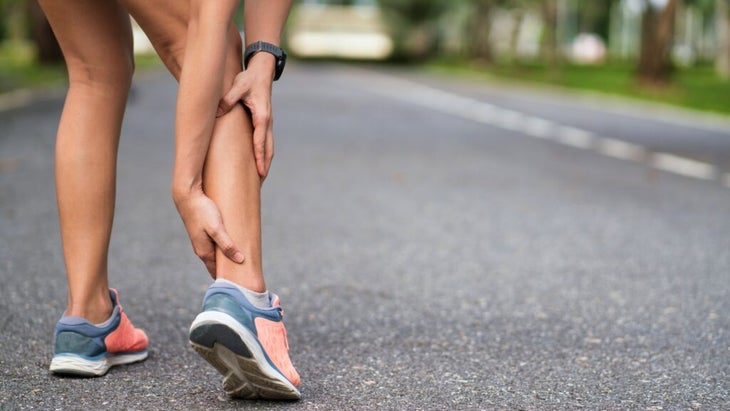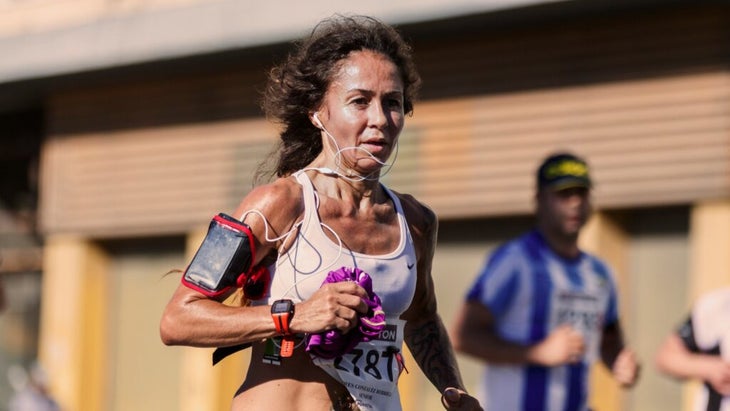Inflammation is a major buzzword these days—and not just in the context of sprained ankles or itchy insect bites. Much of the discussion instead surrounds the chronic low-grade inflammation that tends to increase throughout your body as you age. This phenomenon is thought to contribute to a wide range of ills, like heart disease, cancer, and chronic pain. It even has a catchy name: “inflammaging.” Whether exercise helps or hinders this process has long been a topic of debate.
It’s clear that exercise causes a short-term surge of inflammation. One of the earliest studies in sports science, in 1901, tested blood samples from four competitors in the Boston Marathon. The results showed a spectacular surge of inflammatory markers after the race, which was, at the time, interpreted as worrisome evidence that “the exercise had gone far beyond physiological limits.”
In the years since then, we’ve come to a more nuanced view of the links between exercise and inflammation. Yes, exercise triggers acute inflammation. But the body responds by deploying its own anti-inflammatory molecules. One theory is that the body’s defenses against inflammation then get stronger over time, so regular exercise actually protects you from inflammaging. Evidence for this claim is mixed, though, so researchers in Spain recently pooled the available data to investigate the effect of decades of serious athletic training on inflammation.

What’s the Problem with Inflammation?
Inflammation is a double-edged sword. It’s part of the body’s emergency response to stressors like an infection or a twisted ankle, a biochemical cascade that often results in swelling or soreness, but also calls in key molecules that initiate the defense and repair process. That’s why sports doctors use anti-inflammatory drugs more sparingly than they used to, because shutting down inflammation might delay recovery. In this context, inflammation is good—as long as it turns off again once the danger is past.
Inflammation becomes a problem when it’s chronic (meaning that it doesn’t shut off once a threat has been successfully dealt with) and systemic (meaning that it’s everywhere in the body rather than just at the site of an injury). Chronic inflammation is a characteristic—and likely a cause—of heart disease, cancer, diabetes, and various other conditions. To put it bluntly, if you have high levels of various inflammatory markers when you’re at rest, you’re likely to die sooner than someone with lower levels.
There are various reasons that you might have chronic inflammation: a lingering infection, high levels of psychological or emotional stress, and so on. Your diet can contribute, although there’s plenty of debate about which foods help or hinder (fiber, fruit, and vegetables are probably good; sugar and trans fats, not so much).
The big factor, though, is aging. As you get older, baseline levels of various inflammatory markers creep inexorably upward. It’s not entirely clear why it happens. One theory is that dead or damaged cells accumulate and keep triggering the immune system at a low level; another is that it’s caused by gradual changes in your gut microbiome. Whatever the cause, it’s bad news.
How Being an Athlete Affects Inflammaging
The new study, published in Sports Medicine, comes from a joint research team led by Iñigo Pérez‑Castillo of Abbott Nutrition in Spain, along with medical staff from the Real Madrid soccer club and the Real Madrid Graduate School, a sports-focused unit of the European University of Madrid. (Yes, that’s a real thing. I looked it up.)
Previous research has shown that if you train for a few months, your baseline levels of inflammation will go down—but then if you stop training, the levels go back up. What Pérez‑Castillo wanted to know was whether, if you train at a reasonable level and simply never stop, you can avoid inflammaging altogether. To find out, he and his colleagues pooled the results of 17 studies with 649 participants in total, comparing lifelong masters athletes—people over the age of 35 who train and compete regularly in a sport—with healthy but untrained people both young and old.
One challenge with studying inflammation is that there’s no simple measure of it. Instead, there’s a whole collection of molecules that respond to various types of stimulus in various ways that increase or decrease inflammation. Some do both. Interleukin-6, for example, surges sharply and temporarily after exercise in a way that fights inflammation, but at higher levels during rest can promote inflammation.
This means you have to look holistically at a bunch of markers to get a sense of overall inflammation levels. When you do this, a fairly convincing pattern emerges in the data. If you compare masters athletes with age-matched peers who don’t train, the athletes have consistently lower levels of baseline inflammation. But if you compare them to young people in their 20s who don’t train, the young people have even lower levels. Youth trumps training, in this case.

The data isn’t totally uniform. The strongest results show up in comparisons of C-reactive protein, which is associated with inflammation, and interleukin-10, which fights inflammation. Older athletes have less of the former and more of the latter. Training didn’t seem to make any difference for tumor necrosis factor alpha, another inflammatory molecule.
For interleukin-6, the results were mixed. Training didn’t lower baseline levels by a statistically significant margin. But when you break out the data by sport, endurance training did have a significant benefit while resistance training didn’t. That might be because endurance training has unique powers, or it might simply be that there haven’t been enough resistance training studies to see an effect. At this point, there’s no way of knowing.
If you were hoping for proof that running is the fountain of youth, you might see these results as a let-down. (I’ll admit, I was hoping for better news.) It’s possible that we might eventually stop inflammaging entirely by pulling more levers: maybe it’s lifelong endurance training and eating some yet-to-be-determined mix of vegetables and fish and never raising your voice in anger. The more likely scenario, I suspect, is that nothing can halt the flow of time entirely. If that’s the case, then I’ll take these results as a win.
***
For more Sweat Science, join me on Threads and Facebook, sign up for the email newsletter, and check out my new book The Explorer’s Gene: Why We Seek Big Challenges, New Flavors, and the Blank Spots on the Map.























